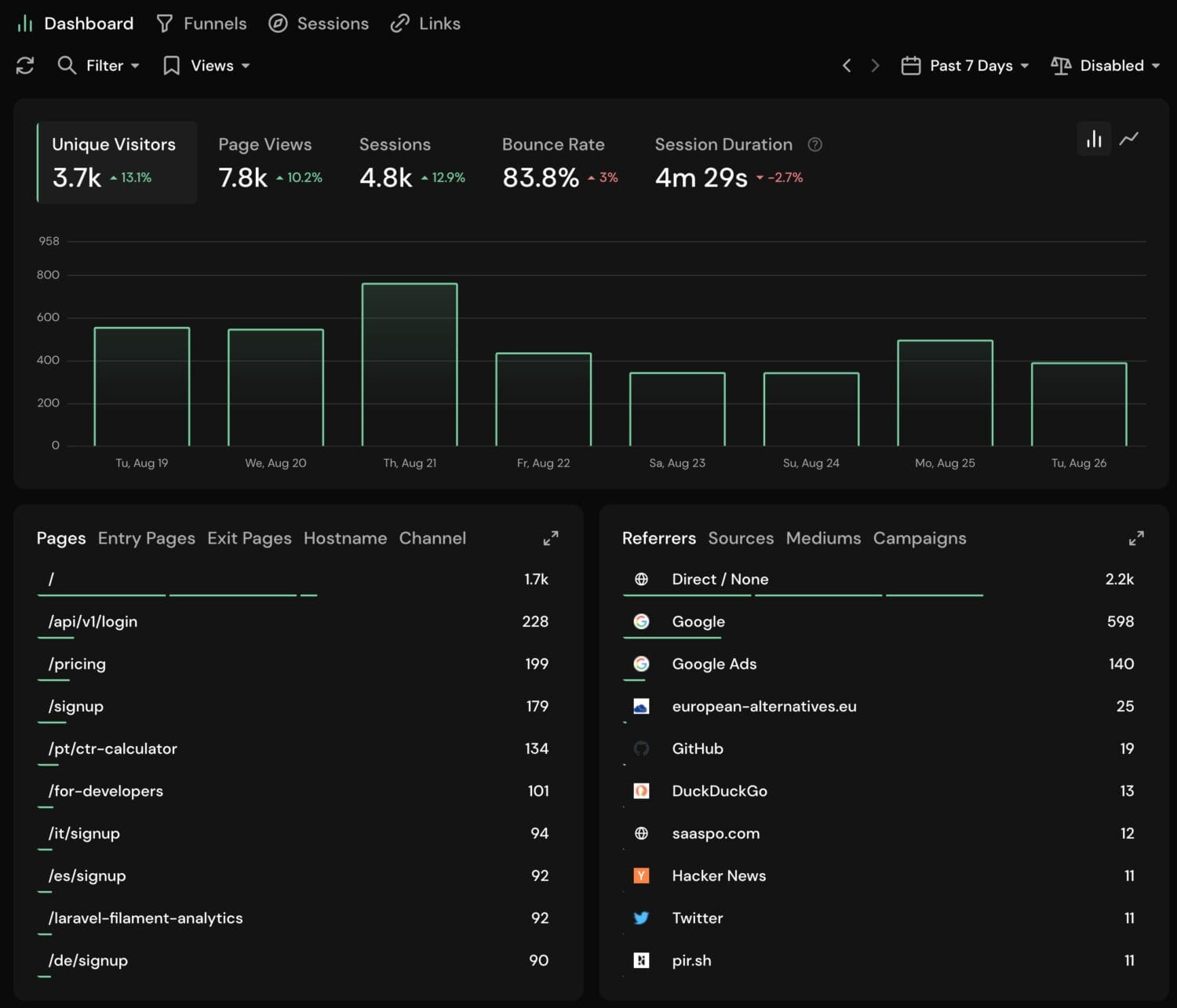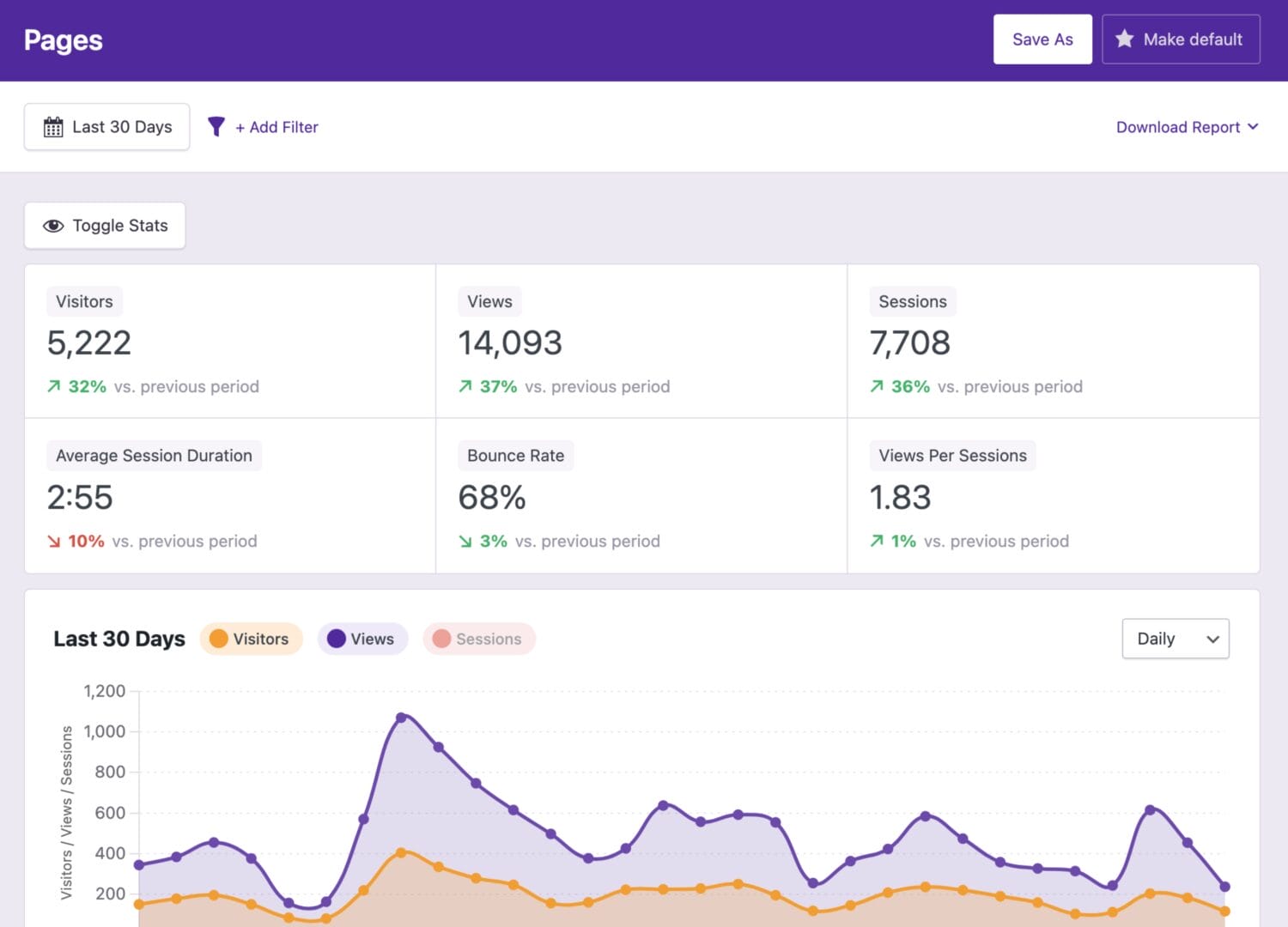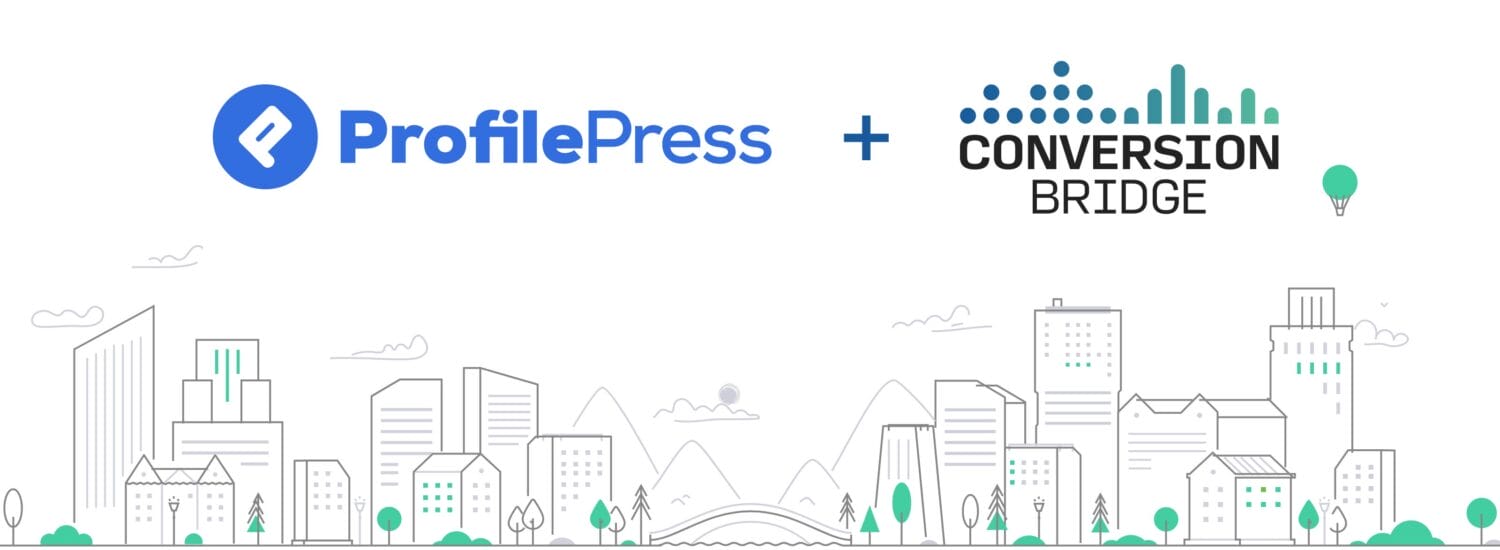Website Analytics and Conversion Tracking for Membership Sites
If you run a membership site, you probably check your traffic numbers. How many people visited this week? Which blog posts got the most views? That’s fine, but let’s be real: traffic alone doesn’t tell you much about whether your site is actually growing.
The real question isn’t who showed up but what those people did after they arrived. Did they sign up for your free plan? Did they subscribe to your premium tier? Did they renew their membership when it was about to expire?
That’s where website analytics and conversion tracking come in. In this article, we’ll cover the basics of analytics, why conversions matter even more, and how you can make it all work seamlessly with ProfilePress — and yes, we’ll show you an easy way to set this up without needing to be a data scientist.
What is Website Analytics?
At its simplest, website analytics refers to measuring how people interact with your website. Think of it like a guestbook with superpowers: not only can you see who walked in, but also where they came from, which rooms they explored, and how long they stayed.
The most common metrics include:
- Pageviews & sessions: How many times your site or specific pages were loaded.
- Traffic sources: Did they come from Google search, social media, an ad campaign, or a direct link?
- Devices: Are your members primarily browsing on mobile devices, desktops, or tablets?
- Geography & demographics: Where in the world are your visitors coming from?
Now, here’s the central point: analytics is not just Google Analytics.
Analytics and Privacy: Why It Matters More Than Ever
When most people think of analytics, Google Analytics 4 (GA4) is the first platform that comes to mind. And to be fair, it’s extremely powerful. But with great power comes… a lot of setup steps.
Between cookie banners, consent forms, and figuring out what to track, GA4 can feel like a second job. Additionally, privacy laws such as GDPR in Europe and CCPA in California add an extra layer of responsibility. In fact, some European countries have even decided that GA4 doesn’t quite fit their rules around international data transfers.
GA4 also has a poor reputation, even among savvy web marketers, due to its overly complex dashboards when trying to find the data you really need. Once you figure it out, it does provide great information. It just may take a while to sort out where everything is hidden.
That doesn’t mean you can’t or shouldn’t use GA4—it just means you’ll want to ensure you’re following the correct steps for compliance in your region and have realistic expectations for the time it will take to implement.
The Rise of Privacy-First Alternatives
For many site owners, the potential legal concerns and complexity around GA4 have opened the door for privacy-first analytics platforms. These platforms are designed to be simple, compliant, and cookie-free right out of the box. Instead of juggling legal checklists, you get clean insights without the extra stress.
Some popular hosted options include:
- Plausible Analytics – Lightweight, no cookies, and GDPR-friendly.
- Fathom Analytics – Fast, simple dashboards focused on what matters.
- Usermaven – Offers marketing and cohort insights, with privacy in mind.
- Pirsch – Developer-friendly, API-driven, and built for compliance.
And if you’d rather keep everything inside WordPress itself, there are plugin-based solutions too:
- Independent Analytics – Cookie-free, data stays in WordPress, great for privacy.
- AnalyticsWP – More of a modern, lightweight alternative with a clean UI, built for WordPress.
- WP Statistics – Long-standing, feature-rich plugin with local storage.




For a side-by-side breakdown, check out Conversion Bridge’s analytics platform comparison chart — it’ll save you hours of research, giving you a detailed pricing and feature breakdown.
What This Means for Membership Sites
If you’re running a membership site with ProfilePress, you don’t necessarily need every data point under the sun. You just need the right insights: which campaigns attract people, how they navigate your site, and where conversions occur.
That’s why privacy-first platforms are growing so quickly—they provide the essential answers without the complexity (or compliance headaches).
What Info Can I Get from Website Analytics?
Once you’ve chosen an analytics tool and added it to your site, the next question is: what do you actually learn from it?
Most platforms offer a similar set of core insights, but the value lies in applying them to your membership site. Here are some of the most common data points and what they mean in practice:
- Traffic sources
Analytics shows you where visitors came from — search engines, social media, paid ads, referral links, or email campaigns.
Example: You might discover that your email campaigns drive fewer visitors than Facebook ads, but the email subscribers convert into paying members at a much higher rate. - On-site behavior
Which pages do people visit, how long do they stay, and where do they drop off?
Example: If a large percentage of visitors check out your pricing page but never move to registration, that’s a sign your pricing or signup process needs work. - Devices & technology
Do most members access your site from mobile devices, desktops, or tablets? Are there browsers that perform poorly?
Example: If 80% of new signups occur on mobile, but your registration form isn’t optimized for small screens, you’re likely losing conversions without even realizing it. - Geography & demographics
Where in the world are your visitors coming from? Do you need to support multiple currencies or languages?
Example: If analytics shows a spike in visitors from Australia, you might consider offering Australian currency at checkout or adjusting campaigns for that audience.
These insights are useful because they tie directly into business decisions:
- You can double down on the marketing channels that bring the best members.
- You can identify friction points in your signup flow and fix them.
- You can adjust your membership plans to match the demographics actually visiting your site.
The key point to remember is that analytics data is only useful when you connect it to your membership goals. Pageviews are fine, but unless they lead to registrations, subscriptions, or upgrades, they’re just vanity numbers.
Go Beyond Pageviews: Tracking Conversions
Traffic statistics are useful, but page views don’t pay the bills. What really matters is whether visitors are taking the actions that move your membership business forward. Those actions are called conversions.
A conversion is any meaningful step toward your business goals. For a membership site built with ProfilePress, the most important conversions usually include:
- New membership signups
- Registration form completions (free or paid accounts)
But not every important action is a full signup. Micro-conversions are smaller steps that indicate a visitor is moving in the right direction. For example:
- Clicking the “View Pricing” button
- Signing up for your newsletter or free trial
- Downloading a lead magnet, like a guide or free course preview
Think of micro-conversions as “early signals.” They don’t generate revenue immediately, but they often lead to the bigger conversions later.
Example: Someone downloads your free ebook (micro-conversion). A week later, they return to sign up for your paid membership plan (macro-conversion). Without tracking the first step, you’d never know the ebook campaign played a role in the sale.
By tracking both big and small conversions, you get a much clearer picture of your funnel:
- What attracts new visitors?
- What nudges them closer to joining?
- Which actions finally turn them into members?
Pageviews tell you how many people visited. Conversions tell you whether your site is actually growing.
What Should I Be Tracking as a Membership Site Owner?
Not all conversions are equal. For membership sites, the most valuable insights don’t just come from knowing how many people signed up, but what they signed up for and how much revenue those signups generated.
At a minimum, you’ll want to track:
- Membership plan subscribed to
Which tier did someone choose? This indicates where the demand lies and whether your premium plans are positioned effectively. - Plan ID
The behind-the-scenes identifier that lets you tie conversions to specific campaigns. Run two ads or referral programs? Tracking Plan IDs shows exactly which one drove the results. - Price & currency
Beyond just counting signups, this shows the actual revenue each conversion brings in — and helps you compare performance across different regions when you’re selling internationally. - Registration form completions
Getting people to the form is only half the battle. Tracking completions (and drop-offs) shows whether your signup process is smooth or creating friction.
Why Value Tracking Matters
Here’s a real-world example:
- Referral Site A sends you 100 new members in a month.
- Referral Site B sends you 150 new members.
At first glance, Site B appears to be the better option. But then you check the signup data:
- Site A’s referrals mostly signed up for premium plans, generating $5,000 in revenue.
- Site B’s referrals signed up for entry-level plans, generating only $3,000 in revenue.
Suddenly, Site A is the clear winner. If you only tracked raw signup counts, you might double down on the wrong partner and leave money on the table.
This is why tracking plan type, price, and currency matters so much. It ensures you focus on the quality of conversions, not just quantity.
Don’t Forget Segmentation
Conversions tell you what happened. Segmentation tells you who did it and how different groups of members behave once they’re in your system.
For membership sites, you’ll want to break down activity based on things like:
- Logged-out vs. logged-in users – Do logged-out visitors mostly browse blog posts, while logged-in members spend their time in the dashboard or account area?
- Membership levels – Do premium members consume more content or log in more frequently than basic members? Do specific tiers exhibit higher engagement or retention rates?
- Activity after signup – Are members interacting with the site regularly, or do they sign up and then disappear? Are certain content types (such as courses, downloads, and forums) driving more repeat visits?
These kinds of insights turn analytics from a “traffic report” into a growth tool. For example:
- If premium members consistently log in twice as often as basic members, that tells you engagement scales with plan value.
- If logged-in users spend significantly more time on community pages, you might want to promote those features more heavily.
- If a large group of registered members rarely logs in, it may signal onboarding issues that need to be addressed.
Segmentation helps you identify which members are truly active, which ones are slipping away, and which features or pages keep them coming back, ensuring they are getting value from their membership.
Tracking Paid Ads and Enhanced Conversions
The same principle applies when you’re running ads on platforms like Google, Facebook, etc. It’s not just about “how many signups did I get,” but also “how much revenue did those signups generate?”
That’s where enhanced conversions come in. Instead of just telling an ad platform “a conversion happened,” you also securely send details like the member’s first name, last name, and email address.
Why this matters:
- Ad platforms can match that data with their own records to verify the conversion originated from them.
- This makes reporting far more accurate — even if cookies or browser restrictions block traditional tracking.
- You get a clearer view of which campaigns, ad groups, or keywords actually drive paying members.
Example: Imagine someone clicks your ad on Facebook while browsing on their phone, but they don’t sign up right away. Later, they sit down at their laptop, visit your site directly, and complete the ProfilePress signup form.
Without enhanced conversions, that signup would look like it came “out of nowhere” from desktop traffic — and your ad would get zero credit. With enhanced conversions, the email address is matched back to Facebook, revealing that the ad was effective after all.
This difference completely changes how you allocate your ad spend. Instead of shutting off a campaign that “isn’t working,” you see the full picture and keep investing in what’s actually driving results.
Making Conversion Tracking Easy
By now, you’ve seen how valuable conversion tracking can be, but here’s the catch: setting it all up manually is a headache. You’d have to:
- Write custom code to capture membership events.
- Configure event triggers for each signup or registration form.
- Pass along plan IDs, prices, and currencies correctly.
- Securely send enhanced data, such as names and emails, to ad platforms.
It’s complicated, error-prone, and can quickly turn into a full-time job.

That’s why we’ve partnered with Conversion Bridge to ensure an incredibly deep, native, and simple integration exists for ProfilePress. Their expertise in analytics and ad tracking means ProfilePress customers receive a solution that works regardless of which analytics or ad platforms they use.
Out of the box, Conversion Bridge:
- Tracks all the membership data you’ve just learned about in this article — signups, plan IDs, prices, and enhanced conversion details.
- Automatically sets up segmentation, so you can see how logged-in vs. logged-out visitors behave, and how different membership levels engage with your site.
- Connects to 15+ analytics platforms (from GA4 to privacy-first platforms like Plausible and Fathom).
- Sends conversions to all the major ad networks like Google Ads, Meta Ads, X Ads, TikTok, and more.
And because Conversion Bridge integrates with 55+ other WordPress plugins (with more added all the time), it’s not just your membership system that benefits. Chances are, it already works with the other plugins you’re using — whether that’s ecommerce, forms, donations, or learning management systems.
In short, you run your membership site with ProfilePress, and Conversion Bridge ensures the conversions and segmentations are tracked automatically. Hence, the data flows exactly where it needs to — giving you clarity without complexity.
FAQs
Do I need Google Analytics to track membership conversions?
No. While GA4 is the most well-known platform, several alternatives exist, including Plausible, Fathom, Usermaven, and WordPress plugins such as Independent Analytics or AnalyticsWP. The primary consideration is selecting a platform that suits your needs and comfort level.
What’s the difference between pageviews and conversions?
Pageviews indicate the number of times your pages were viewed. Conversions measure actions that actually drive growth on your site — such as membership sign-ups, registrations, or plan upgrades. Pageviews show attention; conversions show results.
Why should I track plan type and value, not just signups?
Because not all sign-ups are equal, one campaign might attract more members, while another might drive higher-value plans. Tracking plan IDs, prices, and currencies helps you see which traffic sources truly generate revenue.
Do I need to track micro-conversions too?
Yes. Actions like clicking “View Pricing,” downloading a free guide, or joining your email list may not generate immediate income, but they’re often the steps that lead to paid memberships later.
How do privacy laws affect website analytics?
Regulations like GDPR and CCPA require transparency about what data you collect and how it’s used. That’s why privacy-first analytics platforms have become so popular — they give you insights without relying on invasive tracking.
Can I use more than one analytics solution at the same time?
Absolutely. Many site owners run GA4 alongside some alternatives like Plausible. This gives you both the depth of enterprise-style reporting and the clarity of straightforward dashboards. Conversion Bridge makes it very easy to enable multiple analytics at the same time as well.
Final Thoughts
Traffic is nice. Conversions are better. But the real magic happens when you understand your members — not just how many sign up, but what plans they choose, how they engage, and what keeps them coming back.
That’s the promise of analytics, conversion tracking, and segmentation working together:
- Analytics shows you what’s happening.
- Conversion tracking shows you what drives growth.
- Segmentation shows you how your community actually behaves.
When you have all three, your membership site stops being a guessing game and starts becoming a growth engine.
And the best part? You don’t have to figure it out alone. With ProfilePress powering your membership system and Conversion Bridge handling the tracking, you get a complete solution that works seamlessly in the background. You can focus on building your community, creating value for your members, and growing your business — while knowing the insights you need are always at your fingertips.
Your members are more than pageviews. Start tracking what really matters, and watch your membership site thrive.